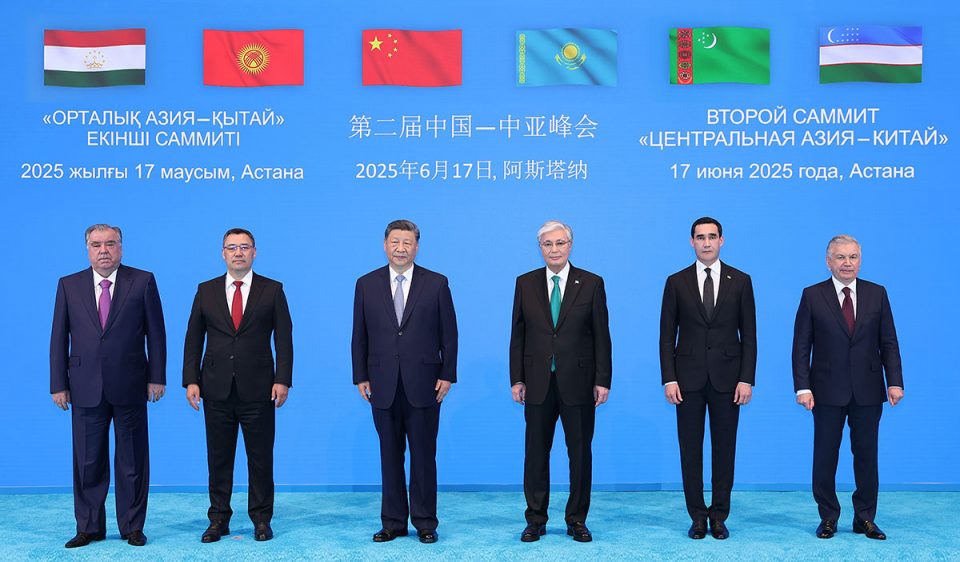The Second China-Central Asia Summit, convened on June 17, 2025, in Astana, Kazakhstan, marked a pivotal moment in regional diplomacy. Bringing together leaders from China and the five Central Asian nations—Kazakhstan, Kyrgyzstan, Tajikistan, Turkmenistan, and Uzbekistan—the summit built on the foundation laid during the inaugural meeting in Xi’an, China, in May 2023.
Hosted at the invitation of Kazakh President Kassym-Jomart Tokayev, the event was attended by Chinese President Xi Jinping and his Central Asian counterparts. The summit aimed to deepen economic, security, and cultural cooperation, reinforcing the China-Central Asia mechanism as a platform for mutual benefit and regional stability. This report consolidates key outcomes, agreements, and perspectives from the summit, drawing on various sources to provide a comprehensive overview.
Key Outcomes and Agreements
Economic Cooperation
The summit facilitated significant economic advancements, with the signing of 58 agreements valued at nearly $25 billion during the China-Central Asia Industrial and Investment Cooperation Forum. These agreements span multiple sectors, including green technology, energy, agriculture, and infrastructure, reflecting a commitment to high-quality development.
Major Projects
China-Kyrgyzstan-Uzbekistan Railway: A flagship project with an estimated cost of $8 billion, construction is set to commence in July 2025, with completion targeted for 2030. This railway will enhance connectivity across Central Asia, aligning with the Belt and Road Initiative (BRI).
Pumped Storage Power Plant in Almaty Region, Kazakhstan: An agreement between Samruk Energy and China International Water & Electric Corporation (CIWEC) to construct a facility to balance renewable energy output, critical for sustainable energy development [The Astana Times].
Coal Gasification Plant: Signed between QazaqGaz and Shandong Energy Group, this plant will produce 2 billion cubic meters of gas annually, creating 1,500 permanent jobs and boosting technological and export capacity [The Astana Times].
Agricultural Initiatives: Agreements include a deep corn processing plant in Zhambyl Region and a high-tech wheat processing facility in Akmola Region, Kazakhstan, with construction already underway for the latter [The Astana Times].
Green Hydrogen Production: A collaboration between Kazakhstan and Chinese company Seraphim to advance sustainable energy solutions [The Astana Times].
Financial and Technical Support
Financial Pledge: China committed 1.5 billion yuan (approximately $209 million) for livelihood and development projects across Central Asia, aimed at supporting economic and social initiatives [South China Morning Post].
Training Opportunities: China will provide 3,000 training opportunities for Central Asian countries over the next two years, fostering capacity building in various sectors [South China Morning Post].
Green Technology Access: Kazakhstan secured access to China’s Green Technology Bank through a strategic cooperation agreement between the International Green Technologies and Investment Projects Center (IGTIPC) and the Shanghai Science and Technology Exchange Center (SSTEC). This will support 20 priority green projects, including innovations in renewable energy, water resources, waste recycling, and agroecology [The Astana Times].
Trade Achievements
Since the first summit in 2023, trade between China and Central Asia has grown significantly, reaching $94.82 billion in 2024, with Kazakhstan alone accounting for $43.82 billion, a record high.
Specific trade figures for 2023 include:
Kazakhstan: Imports $18.7 billion (30% of total), Exports $15 billion (16% of total).
Tajikistan: Imports $3.68 billion (56% of total), Exports $250 million (16% of total).
Kyrgyzstan: Imports $3.68 billion (29% of total), Exports $887 million (26% of total).
Uzbekistan: Imports $12.7 billion (32% of total), Exports $1.82 billion (6% of total).
Turkmenistan: Imports $957 million (20% of total), Exports $9.63 billion (62% of total) [Al Jazeera].
Trade volume in first 5 months of this year:
In the first five months of this year, trade turnover between China and the five Central Asian countries (Kazakhstan, Kyrgyzstan, Tajikistan, Turkmenistan and Uzbekistan) grew 10.4 percent year-on-year to 286.42 billion yuan (about $39.91 billion), a new all-time high for the period, the General Administration of Customs said Sunday.
According to the agency, in January-May, exports from China to Central Asian countries increased by 5.6% to 188.18 billion yuan. Imports from Central Asia to China showed a more significant increase – by 21%, amounting to 98.24 billion yuan.
There has been a significant increase in agricultural imports from Central Asian countries to China, reaching 4.36 billion yuan, up 26.9% from a year earlier.
The volume of trade carried out by road transport also increased, reaching 143.65 billion yuan during the reporting period, up 10.9% year-on-year.

